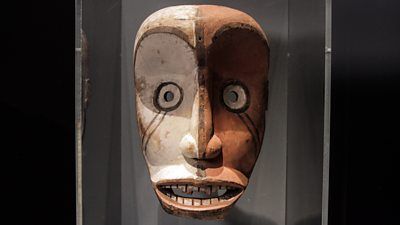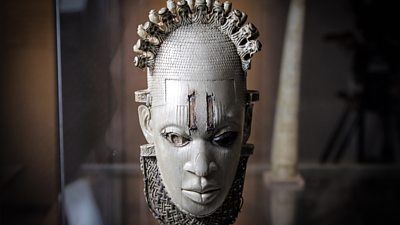The BEST episodes written by David Olusoga

#1 - The Cult of Progress
Civilisations (2018) - Season 1 - Episode 8
David Olusoga’s second film in Civilisations is about the art that followed and reflected early encounters between different cultures, in this programme he outlines the artistic reaction to imperialism in the 19th century. David shows the growing ambivalence with which artists reacted to the idea of progress - both intellectual and scientific - that underpinned the imperial mission and followed the Enlightenment and the Industrial Revolution. Advances in knowledge and technology imbued Europeans in the 19th century with a sense of their civilisation’s superiority. It justified their imperial ideology. But it created among artists a deep fascination with other civilisations which in turn produced a scepticism about their own. By contrast, as European artists questioned their civilisation’s ‘advance’, in America painters sought to capture an idea of their new nation’s ‘manifest destiny’ in landscapes. And in their representation of the Native Americans they sought to record for posterity the world and the cultures they were violently displacing. But this was not always the case. David shows how in New Zealand one artist was coopted by the Maori who used his skills to record their culture and celebrate their ancestors. As the 19th Century came to an end, the certainties of industrial and scientific advance were increasingly questioned; many artists (Gauguin and Picasso amongst them) turned to non-Western art and culture for inspiration. And in the face of the catastrophe of the First World War, the idea that progress, reason and industrial advance were guarantors of higher ‘civilisation’ was rejected. David ends the film with a powerful meditation on Otto Dix’s nightmarish and ironic evocation of the horror of the trenches, the triptych Der Krieg (The War).
Watch Now:Amazon
#2 - First Contact
Civilisations (2018) - Season 1 - Episode 6
In the 15th and 16th centuries distant and disparate cultures met, often for the first time. These encounters provoked wonder, awe, bafflement and fear. And, as historian of empire David Olusoga shows, art was always on the frontline. Each cultural contact at this time left a mark on both sides: the magnificent Benin bronzes record the meeting of an ancient West African kingdom and Portuguese voyagers in a spirit of mutual respect and exchange. By contrast we think Spain’s conquest of Central America in the 16th century as decimating the Aztecs and eviscerating their culture. But David shows even in Mexico rare surviving Aztec artworks recall a more nuanced story. He travels to Japan to show how the Tokugawa Shogunate, after an initial embrace, became so wary of outside interference that they sought to cut ties with the outside world. But in their art, as in their trade, they could never truly isolate themselves from foreign influences. By contrast the Protestant Dutch Republic was itself an entirely new kind of creature: a market driven nation-state. It was a system that created new freedoms and opportunities as embodied in the world-infused art of Johannes Vermeer, or the watercolours of the naturalist and illustrator Maria Sibylla Merian. David ends with the transitional story of the British in India: at first the British were as open to foreign influence as the Dutch. But by the 1800s they became more aggressive and the era of encounters gave way to the era of muscular empire, one that was dismissive of India’s arts and cultures.
Watch Now:Amazon